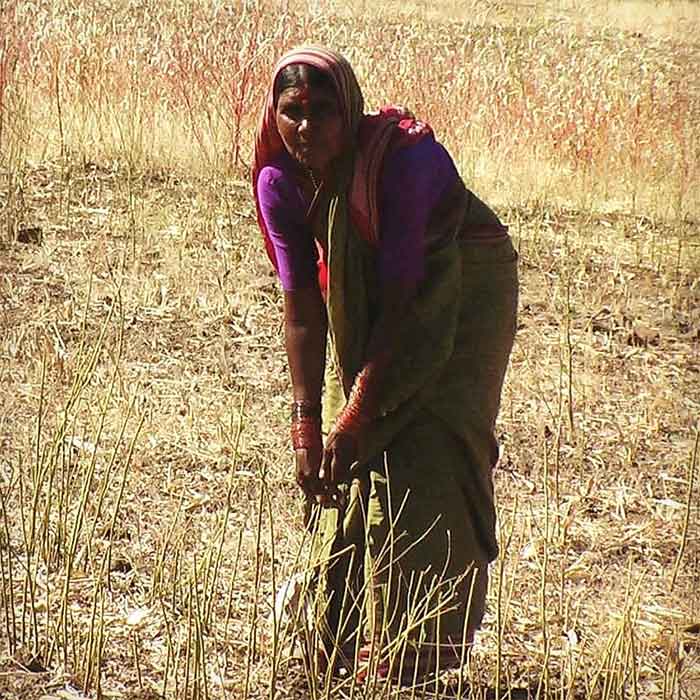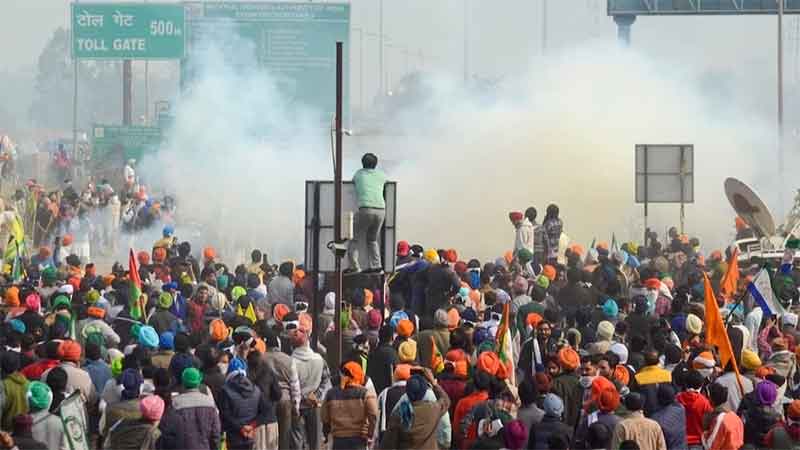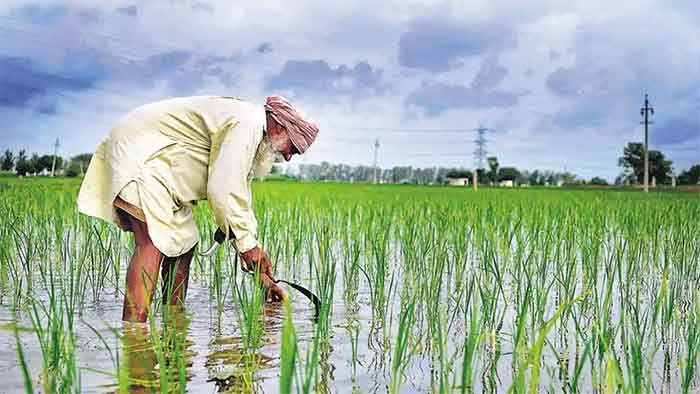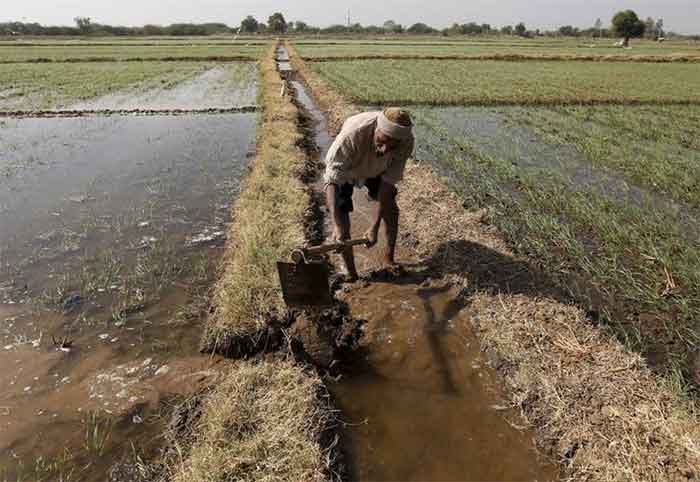Rhetoric not matched by budget allocations so far

The government admitted in July 2019 in a reply in the Rajya Sabha that doubling of farmers’ income was not possible by 2022 at the current rate of growth in the agriculture sector, but added that it was trying to promote the growth of allied sectors to achieve the target. (see PTI report published in the Business Standard dated July 27 2019 titled ‘ Farm income can’t be doubled by 2022 at current growth rate : Govt.’).
Now we are already in year 2022 and just try asking farmers if their real income (adjusted for inflation) has doubled in the last 5 or 6 years. So was the government’s earlier rhetoric started around 2016 regarding doubling the income of farmers by 2022 just another ‘jumla’ (false or exaggerated claim not to be taken at word value) on the part of the government? More specifically, is it matched by supporting rise in budget allocations for agriculture and related activities by the government?
If the union budget allocations during this period are examined , then it becomes clear that the specifically farmer related allocation rise is mainly confined to only one new scheme of Kisan Samman related to some annual transfer in instalments to farmers. This is also limited by the exclusion, in most cases, of tenants, sharecroppers, farm workers, those with some problems of land records, as well by less recognition of women farmers. Besides, even this prestige scheme has suffered a budget cut in more recent times.
Some other increases merely reflect a shifting of a scheme or allocations from one place to another in the budget documents. As has been pointed out in the analysis of the 2021-22 budget by the Centre for Budget and Governance Accountability titled , ‘ Budget in the Time of the Pandemic’, “ About half of the extra spending of Rs. 3 lakh crore on the food subsidy is on account of pending dues paid to the Food Corporation of India. Similarly, nearly Rs. 50,000 crore of the increase in fertiliser subsidy went to clear old dues to fertiliser companies.” Such increase of expenditure as shown in budget figures is hardly like to help farmers.
Keeping in view the specific statement made in 2019 by the government to relate its doubling of farmers income discourse more to allied sectors, it is significant to see that this is not backed by any big increase subsequently in allied sectors like animal husbandry, dairy development and fisheries, particulrly in the specific context of promoting livelihoods of those at the lower end who need such help the most.
If we look at the budget estimate (BE) for 2020-21 for the Department of Agriculture, Cooperation and Farmers’ Welfare ( excluding Interest Subvention), then this amounts to Rs. 113224 crore. However, the revised estimate (RE) for this year faced a big cut and was reduced to Rs. 96926 crore. ( one crore=10 million). The BE for the next year 2021-22 ( Rs. 103549 crore) was still lower than the BE for the previous year by about Rs. 10000 crore.
Even the Pradhan Mantri Kisan Samman Nidhi ( PM-Kisan) or Kisan Samman, the most publicized scheme of the government, faced a budget cut. Its BE for 2020-21 of Rs. 75000 crore was reduced to RE of Rs. 65000 cr, a big cut. For 2021-22, the BE remains reduced to Rs. 65000 cr.
In the case of the Pradhan Mantri Krishi Sinchai Yojana the BE of Rs. 11378 cr. was reduced to RE of Rs. 8206 crore in 2020-21. In the case of the Rashtriya Krishi Vikas Yojana this reduction was from Rs. 3700 crore to Rs. 2551 crore. Even the National Food Security Mission faced a cut from BE of Rs. 2100 crore to RE of Rs. 1864 crore. In the case of the Parampragat Krishi Vikas Yojana the budget cut in 2020-21 was from Rs. 500 crore to Rs. 350 crore, and for 2021-22 the BE mentioned at Rs. 450 crore was still lower than the BE of the previous year.
The Budget for the National Mission on Horticulture faced a cut from Rs. 2300 crore to Rs. 1610 crore while moving in 2020-21 from BE to RE. Despite the assertion of the governmet for giving more priority to allied sectors the budget under the head of ‘ White Revolution’ was reduced from BE of Rs.1805 cr. to RE of Rs. 1642 cr. in the previous year, while the BE for the new year 2021-22 was fixed even lower at Rs. 1177 crore.
The budget for the National Bamboo Mission was cut in 2020-21 from Rs. 110 crore to Rs. 94 crore in 2020-21 and then placed at Rs. 100 crore in 2021-22.
The budget provision for the important scheme called the Market Intervention Scheme and Price Support Scheme (MIS-PSS) in the Ministry of Agriculture was cut from Rs. 2000 crore to Rs. 996 crore in the 2020-21 , and for the next year the BE at Rs. 1500 crore was still much less than the BE of the previous year.
The scheme of the formation and promotion of 10000 farmer producer organizations has been much talked about but its budget in 2020-21 was cut from Rs. 500 crore to Rs. 250 crore.
All the cuts mentioned here will be even more in real terms if the impact of inflation is also provided for.
Hence clearly recent budget allocations do not in any way match the requirements of the rhetoric of the government relating to doubling farmers’ income. In addition if we look at the directions of government spending and priorities then this is increasingly more in the direction of promoting big business interests. A lot of funds are being diverted to food fortification including highly contentious fortification of rice ( which has been opposed by several experts) and oilseeds development has been increasingly tied to palm oil bypassing the much healthier traditional oilseeds, again despite the opposition of experts and ecologists. The government has promoted several farm imports, including most recently that of pork from the USA, and is in the process of changing regulations relating to GM foods which can greatly increase the import of processed GM foods in future. The future implications of this change in favor of permitting GM foods can be disastrous for health of consumers and livelihoods of farmers. Ths is being opposed by not just independent experts and activists but in addition even by sections of the Sangh Parivar particularly the Swadeshi Jagran Manch which are against this drift towards GM foods. Certainly it is very important to oppose such tendenies of the government to favour big agribusinss interests at the costs of farmers as well as consumers. Budget analysis should also give more attention not just to allocations but also to how these are increasingly spent to favour of big business interests.
Bharat Dogra is Honorary Convener, Campaign to Save Earth Now. His recent books include Man Over Machine—A Path to Peace and When the Two Streams Met (Freedom Movement of India).

















































